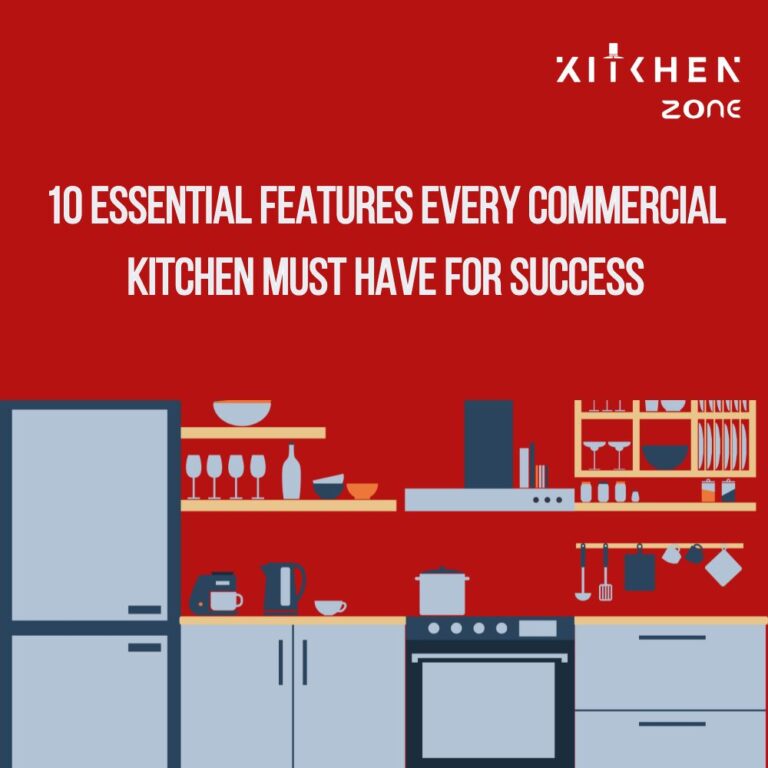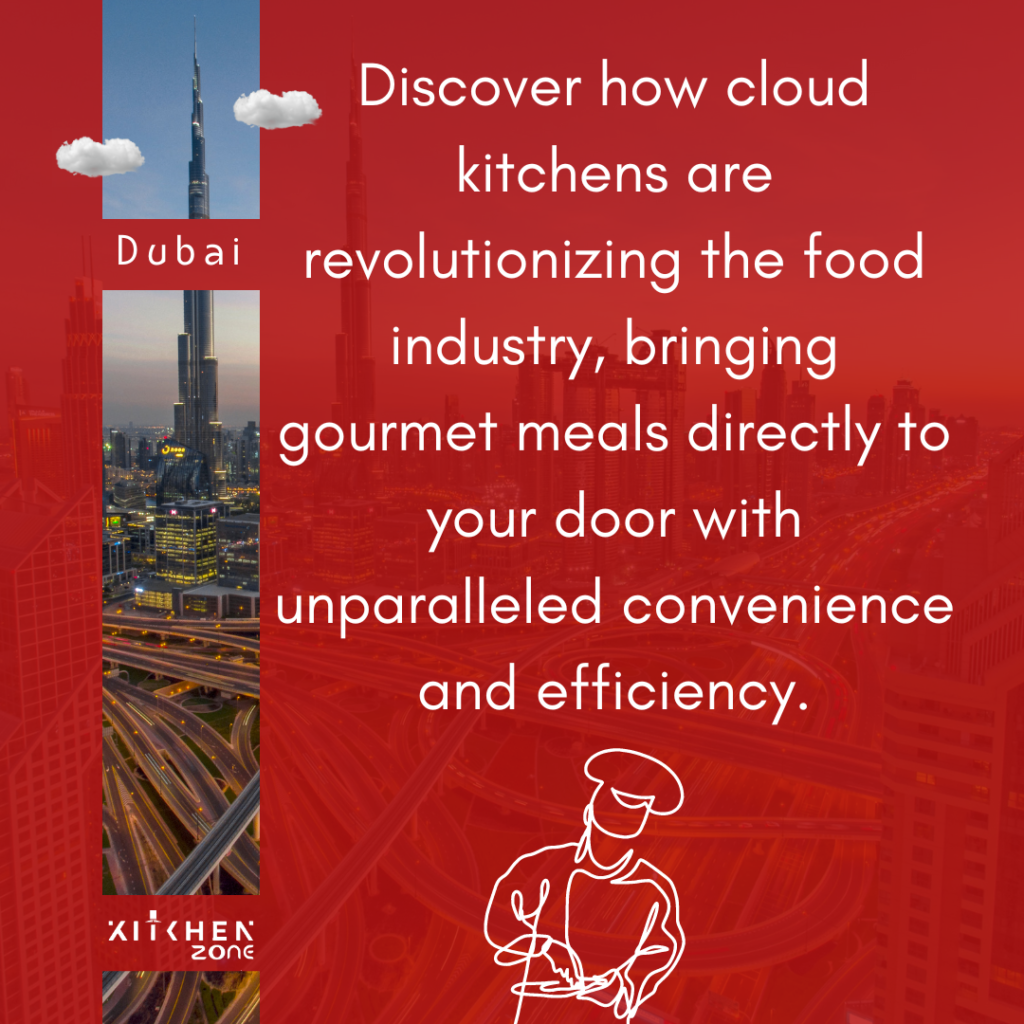Table of Contents
A commercial kitchen is the heart of any successful food service business. Whether you’re opening a restaurant, launching a catering service, or starting a cloud kitchen functionality and layout of your commercial kitchen can make or break your operations. To ensure maximum productivity and compliance with industry standards, here are ten essential features that every commercial kitchen must have.
1. Layout and Design: Maximizing Efficiency
The layout of a commercial cloud kitchen is crucial to its efficiency. A well-thought-out design ensures smooth workflow, reduces unnecessary movement, and enhances productivity. Key design principles include the kitchen work triangle, which emphasizes easy access between cooking, storage, and cleaning areas. Commercial kitchens must also consider ergonomic design to minimize strain on staff.
Open layouts are gaining popularity in commercial kitchens, especially in modern cloud kitchens, where transparency and speed are essential. Adequate spacing between workstations prevents crowding and accidents. Proper placement of equipment and stations can significantly boost productivity and safety in a commercial cloud kitchen.
2. High-Quality Cooking Equipment
Investing in high-quality cooking equipment is non-negotiable for any commercial kitchen. This includes commercial-grade ovens, stovetops, grills, fryers, and microwaves. Reliability, speed, and durability are crucial when selecting equipment, as these tools endure daily heavy use.
Energy-efficient appliances not only reduce operational costs but also support sustainable practices. In cloud kitchens, where speed is critical, having efficient cooking tools can drastically reduce preparation time. Regular maintenance of cooking equipment ensures longevity and prevents breakdowns that could halt operations.
3. Proper Ventilation Systems
A robust ventilation system is vital in any commercial cloud kitchen. It keeps the air clean, removes excess heat and smoke, and maintains a comfortable working environment. Proper ventilation ensures compliance with health and safety regulations and improves the overall air quality in the kitchen.
Without adequate ventilation, a commercial kitchen can become unbearable for staff and hazardous due to the accumulation of grease and carbon monoxide. Modern kitchens utilize advanced hoods, exhaust fans, and make-up air units to balance air pressure and keep the space safe and pleasant.
4. Food Storage Solutions: Refrigeration and Freezing
Efficient food storage is another cornerstone of a successful commercial kitchen. Refrigerators, freezers, and cold storage units must be reliable and spacious enough to accommodate bulk ingredients without compromising food safety.
Organized storage helps maintain inventory control and reduces waste. Labeling systems, shelving units, and FIFO (First In, First Out) practices ensure that older stock is used before new inventory. A commercial kitchen must have dedicated storage for dry goods, perishables, and cleaning supplies to prevent cross-contamination.
5. Safety and Sanitation Features
Safety and sanitation are non-negotiable in any commercial kitchen. From slip-resistant flooring to stainless steel surfaces that are easy to clean, the kitchen must be designed with hygiene in mind. Handwashing stations, sanitizing equipment, and pest control systems are essential.
Commercial kitchens should use color-coded cutting boards and tools to prevent cross-contamination. Staff training on hygiene protocols and regular cleaning schedules ensure a safe cooking environment. Installing fire suppression systems and accessible fire extinguishers also enhances safety.
6. Workflow Optimization: Stations and Zones
Creating dedicated stations and zones within the commercial kitchen streamlines operations and minimizes confusion. Stations may include prep areas, cooking zones, plating sections, and dishwashing areas. Zoning helps assign specific tasks to staff, improving efficiency and accountability.
In a cloud kitchen setting, optimizing workflow becomes even more critical due to high delivery volumes. A clear workflow reduces bottlenecks and enhances speed. Modular kitchen setups allow for easier adaptation to changing menu items and business needs.
7. Technology Integration in Modern Kitchens
Modern commercial kitchens benefit greatly from technology integration. From smart kitchen appliances to POS (Point of Sale) systems and kitchen display systems (KDS), technology improves order accuracy and operational speed.
Automated inventory management tools help keep track of stock levels and reduce waste. IoT-enabled equipment allows for remote monitoring and predictive maintenance. In cloud kitchens, integrated delivery platforms can streamline orders and track delivery performance.
8. Compliance with Health Regulations
Every commercial kitchen must adhere to local health regulations and food safety standards. This includes licensing, regular inspections, and documentation. Staying compliant not only avoids fines and closures but also builds customer trust.
Training staff on food safety practices, maintaining proper temperature logs, and ensuring food traceability are critical components. A well-maintained commercial kitchen with up-to-date health certifications stands out in a competitive food service market.
9. Staff Comfort and Accessibility
A commercial kitchen should not only be functional but also comfortable for the staff. Proper lighting, climate control, and noise reduction features create a better working environment. Accessibility features like anti-fatigue mats and break rooms improve employee morale and reduce turnover.
Designing with inclusivity in mind ensures that staff with different needs can work efficiently. An efficient, comfortable commercial kitchen helps retain talent and boosts overall productivity.
10. Conclusion: Investing in Your Kitchen’s Success
A well-designed commercial kitchen is a game-changer for any food business. By incorporating these ten essential features, business owners can enhance productivity, safety, and customer satisfaction. Whether you operate a traditional restaurant or a modern cloud kitchen, investing in the right infrastructure is key to long-term success.
From layout and high-quality equipment to technology integration and compliance, every element of a commercial kitchen contributes to its efficiency. Make informed decisions and prioritize functionality, safety, and innovation to ensure your commercial kitchen stands the test of time.





